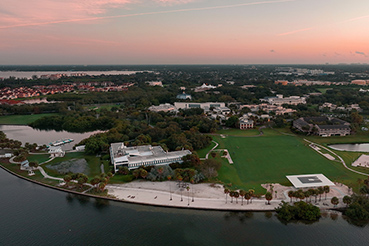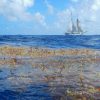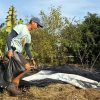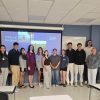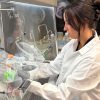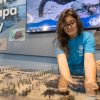Assistant Professor of Marine Science and Biology Koty Sharp, Ph.D., co-authored a research paper that is getting national attention because its findings point to a new way of producing environmentally friendly biofuels.
The research, published recently in the prestigious Proceedings of the National Academy of Sciences, focused on the digestive properties of a species of shipworm, known as termites of the seas for their ability to destroy wooden ships and docks. Shipworms, which are actually a type of clam, have destroyed everything from Columbus’ ships to the wharves of San Francisco.
It turns out that shipworms break down the wood with the help of bacteria that live in their gills not their guts. More importantly, however, the research identified which bacteria produce enzymes to break down the cellulose, and it characterized the enzymes that degrade cellulose. That could lead to new industrial methods to turn cellulose into biofuel.
Sharp conducted the research as a postdoc from 2008 to 2011 at the Ocean Genome Legacy at New England BioLabs. It was a truly collaborative effort involving researchers from multiple institutions around the country, she said.
“Gene-mapping enabled researchers to identify the particular types of bacteria at work in the shipworms’ gills, which take up about one-third of their strange bodies,’’ according to the Minneapolis Post.
Documenting the bacteria used by the shipworm was a breakthrough for the study, which was funded partially by the U.S. Department of Energy. The discovery would make the process of turning cellulose into fuel a much more efficient and cost-effective method than is used today.Shipworms are animals whose closest relatives are the Ipswich Steamer clam. They are weird, tubular creatures that look more like worms than clams and are found in submerged wood in seawater all over the world, including Tampa Bay.
The shipworms used in the research were from Puget Sound. “First, the researchers used genomics to sequence the genomes of the gill bacteria and to identify the genes predicted to be involved in breaking down plant matter,” according to Science Daily. “Then, they searched the gut in hopes of finding proteins there that were encoded in genomes of the gill bacteria. From their examination, the researchers did in fact find these proteins.”
“This was a very exciting project and the findings hold tremendous potential,” Sharp said. “The approaches used in this project, including metagenomics sequencing and analysis, are powerful new techniques that allow researchers to describe how organisms function. Just as we have learned much more about human health and ecology through the sequencing of the human genome, we now are able to describe how organisms function in the environment and interact with one another using environmental metagenomics.”
“All of us at Eckerd are proud of the work Dr. Sharp did on this project and pleased that our students benefit,” said Dean of Students Suzan Harrison, Ph.D. “She has brought her expertise and the tools of metagenomics to her laboratory and teaching at Eckerd College. Now, the students are able to use these leading-edge technologies to research the ecology and evolution of organisms in threatened marine ecosystems, such as coral reefs.”
Other support for the research was provided by the National Science Foundation, the Fogarty International Center at the National Institutes of Health and New England BioLabs. The principal investigator was Dr. Dan Distel, director of the Ocean Genome Legacy Center, now based at Northeastern University.

